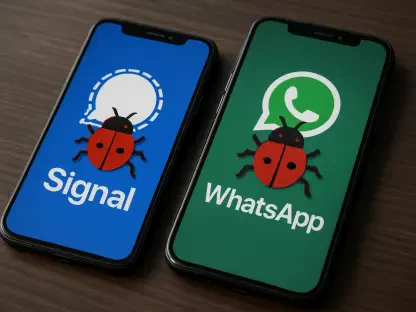Hundreds of millions of people use a smartphone daily, if not hourly.
It’s amazing how this small device contains all your most personal information: passwords, contacts, messages. Even companies heavily rely on them to keep in touch with both their employees and customers.
But, at the same time, from a cyber threat perspective, it’s everyone’s weak link.
And for good reason: nearly all workers now routinely access corporate data from smartphones, making it a very attractive target for cybercriminals. According to a 2018 report by Ponemon Institution and IBM Security, the average total cost of a breach rose from $3.62 to $3.86 million—up by 64% since 2017.
The stakes are higher than ever.
2019 is destined to be yet another year where cyber attacks grow in prominence. But if you know what cybercriminals have in store for you, then you can be a step ahead of the game. So here are some of the threats you should be aware of in the following period:
Data Leakage
Data leakage typically occurs when a brand collects data about a website’s audience and uses that data without the initial publisher’s permission. It can be something as simple as forwarding an email to an unintended recipient.
What makes this issue vexing is that it’s not nefarious by nature. Rather, it’s a matter of users making ill-advised decisions about which apps are able to see their information. Turning to a mobile threat defense solution won’t always cover leakage that happens as a result of overt user error. Data loss prevention tools may be the most effective form of protection against the exposure of sensitive information.
Phishing Attacks
It turns out that you are three times likelier to fall for a phishing attack when reading an email on your mobile device, rather than a computer. The tactic for this relies on impersonation, tricking people into clicking dangerous links or providing sensitive information. Many are at risk of falling for it because of the way many mobile email clients display only a familiar sender’s name.
Verizon’s 2018 Data Breach Investigations Report notes that the more times someone has clicked on a phishing campaign link, the more likely they are to do it again in the future. So only vigilance and caution can prevent you or someone else from falling victim to an attack.
Wi-Fi Interference
Using public wi-fi hotspots might sound tempting (and free of charge), but your info isn’t as secure as you might assume. McAfee says network spoofing has increased as of late, and yet less than half of people bother to secure their connection while traveling and keep on relying on public networks.
“If you don’t have a VPN, you’re leaving a lot of doors on your perimeters open,” says Kevin Du, a computer science professor at Syracuse University who specializes in smartphone security. An effective VPN should know to activate when absolutely necessary, and not when a user is accessing a site that’s only known to be secure.
Out-of-Date Devices
Smartphones, tablets, and smaller connected devices—commonly known as the Internet of Things (IoT)—pose a new risk to enterprise security. Especially if they don’t come with guarantees of timely and ongoing software updates. For example, a new analysis of Android’s notorious update problems suggests patching is actually getting worse over time. In this area, iOS triumphs.
IoT is “an open door,” according to cybersecurity firm Raytheon, which sponsored research showing that 82% of IT professionals predicted that unsecured IoT devices would cause a data breach within their organization.
Cryptocurrency Hijacking
Surprise, surprise: cryptocurrency is going to continue to be a massive deal. If you have found yourself caught in this hype, cryptocurrency hijacking (or “cryptojacking”) is something you need to know about. Cryptojacking works by infecting a victim’s computer with a virus which utilizes hardware resources – such as processors – to mine for cryptocurrency. Not only does this massively slow down and impact the overall performance of the victim’s computer, but it also provides the attacker with a massive financial benefit.
Given the fluctuating activity and rising interest in this area over the past months, it’s something well worth being aware of and keeping an eye on in the coming year.
The Overall Security Outlook for 2019
Predictions are tough—and it’s not as easy as looking into a crystal ball. The threat landscape is huge, and offensive and defensive technologies are constantly evolving, getting more sophisticated.
So what can you do to protect your devices from cybercrime?
Staying educated on the current threats and investing in device security is a starting point. The statistics we’ve shared serve as a way for you to plan how to prevent the growing number of threats in 2019.









